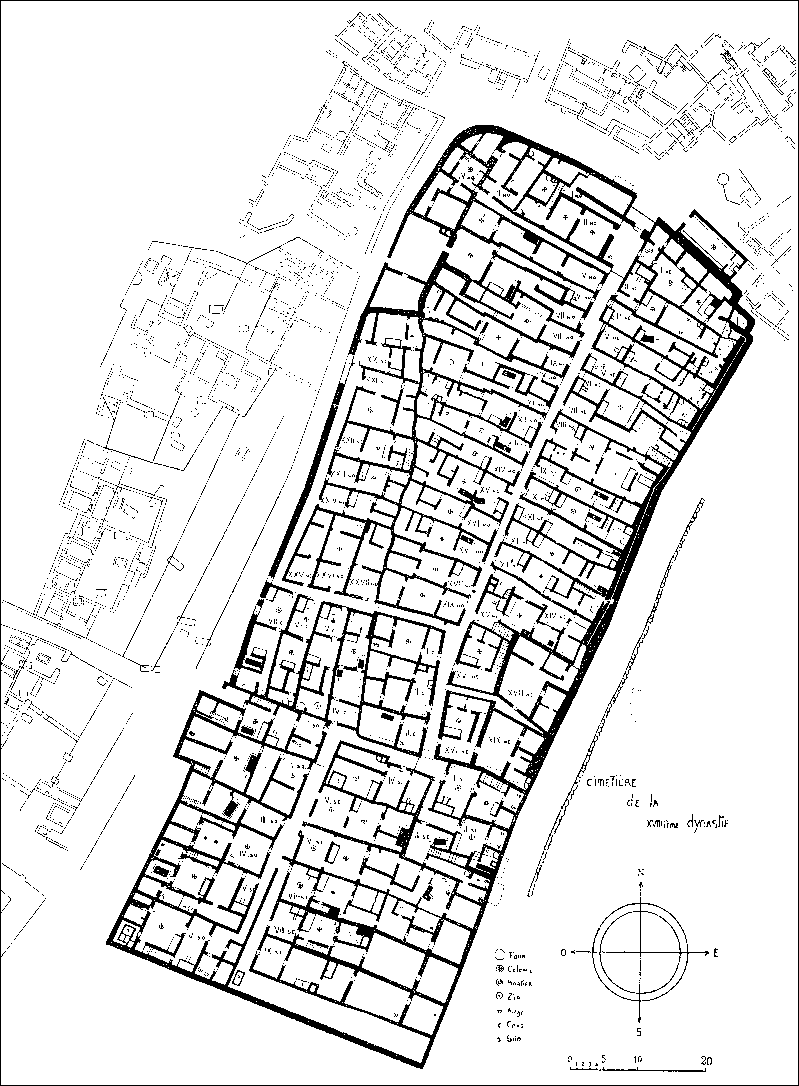These mud-brick emplacements with a short flight of steps leading to a platform, with or without enclosing walls, have remained problematic since their discovery by Bruyere at Deir el-Medina (Figures 22 and 23). They are divided into three main types, and seem to date chiefly to the 19th and 20th Dynasties.584 The most basic form is a mud-brick platform with three steps leading to it; the second type has a low enclosure wall with a central opening, and the third has a higher surrounding wall topped with a cornice. Comparable structures at Amarna have been labelled as household altars, and several scholars585 have suggested that this was the function of those at Deir el-Medina. Not all houses possessed such a structure, and it may be the case that, like the garden shrines at Amarna,586 the features could have been shared with members of the community beyond the immediate household. Bruyere stated in his publications that headrests were found on lits clos,587 but an examination of his notebooks has revealed this to

Figure 22: Lits clos. Houses N. E. XIII (right) and N. E. XII (left) Deir el-Medina, 19th Dynasty.
Be questionable.588 The decoration on lits clos relates specifically to fertility and birth,589 but this need not imply that activities related to this (sexual intercourse, childbirth and postpartum care) occurred there.
Against my conclusion in an article published in 2005, I am no longer convinced that lits clos functioned as beds during pregnancy, birth, or postnatal care. Barry Kemp suggested on the basis of painted plaster fragments at Amarna that childbirth took place on house roofs.590 This would be possible if, as Toivari-Viitala proposes, the ‘birthing’ beds illustrated on ostraca could be dismantled for carriage and storage.591 Folding beds, such as the one found in Tutankhamun’s tomb,592 would also have facilitated this. It is worth noting that two ‘women’s beds’ are mentioned in a list along with birth amulets (sAw msw).593 ‘Birth-bower’ ostraca594 may well depict temporary structures erected on rooftops to protect mother and child from the heat of the sun. There are sufficient textual references to beds as well as physical examples595 for

Figure 23: Plan of Deir el-Medina in the 18th and 19th Dynasties. After Bruyere 1939: pl. vii, reproduced with the permission of the Institut Frangais d’Archeologie Orientale, Cairo. © IFAO.
The lit clos to be redundant as a place of rest or childbirth, and given the size and shape of the structures, midwifery would be virtually impossible.




 World History
World History









